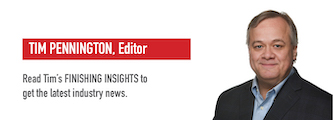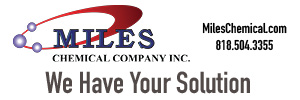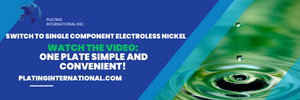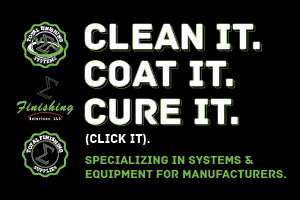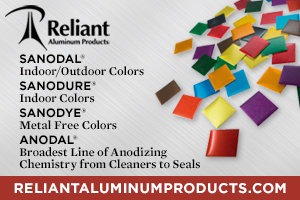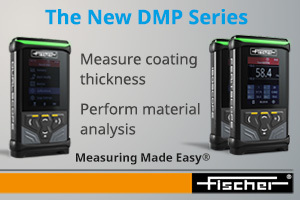Carl Troiano has heard the mantra that, in business, if you don’t have a seat at the table, you just might be on the menu.
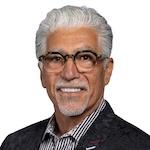 Carl TroianoThat is why, over 20 years ago, the owner of Trojan Powder Coating in Florida and New York decided to become deeply involved in the Fenestration and Glazing Industry Alliance (FGIA), which regulates the manufacturing and finishing of architectural products, from glass to framing.
Carl TroianoThat is why, over 20 years ago, the owner of Trojan Powder Coating in Florida and New York decided to become deeply involved in the Fenestration and Glazing Industry Alliance (FGIA), which regulates the manufacturing and finishing of architectural products, from glass to framing.
The FGIA is the combination of what used to be the American Architectural Manufacturers Association (AAMA) and the Insulating Glass Manufacturers Alliance (IGMA), and with a coating business heavily invested in building products, Troiano knew he needed to be involved.
20 Years of Industry Service to FGIA
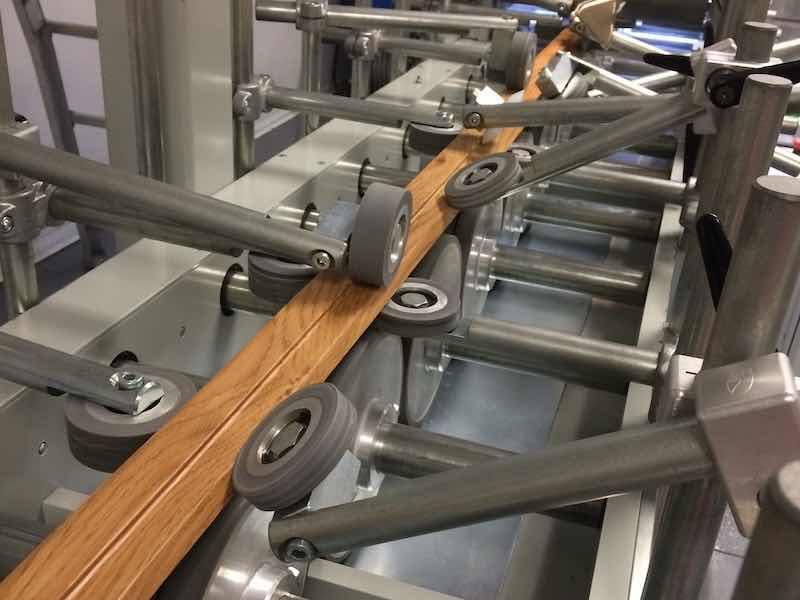 Trojan Powder Coatings' three facilities combine a wide range of coating services with faux finishes, liquid kynar finishes, and lamination.Troiano was recently honored by the FGIA for over 20 years of service, including many as a committee member of the FGIA Architectural Aluminum Handling, Cleaning, and Maintenance Task Group and now as a member of the Board of Directors.
Trojan Powder Coatings' three facilities combine a wide range of coating services with faux finishes, liquid kynar finishes, and lamination.Troiano was recently honored by the FGIA for over 20 years of service, including many as a committee member of the FGIA Architectural Aluminum Handling, Cleaning, and Maintenance Task Group and now as a member of the Board of Directors.
“By joining AAMA at the time, I was able to write many of the finishing specs for the architects,” Troiano says. “And as a result of that, I got to meet a lot of different companies that I could do business with and now on the board of directors for FGIA.”
Troiano is also president of the Southeast FGIA in Florida. He concentrates on the hurricane window specifications the municipal building departments write into their codes. He has done this thankless job as a volunteer for the past two decades, but he does it out of necessity to be a voice of the powder coating and finishing community.
“We create and write all the specifications and technical data sheets on how to do these things and what's available so the architects can be more educated about what they are asking coaters to do,” Troiano says. “These buildings go up, and it's not like something you can just put a lousy finish on. And that finish is going reflect on the project.”
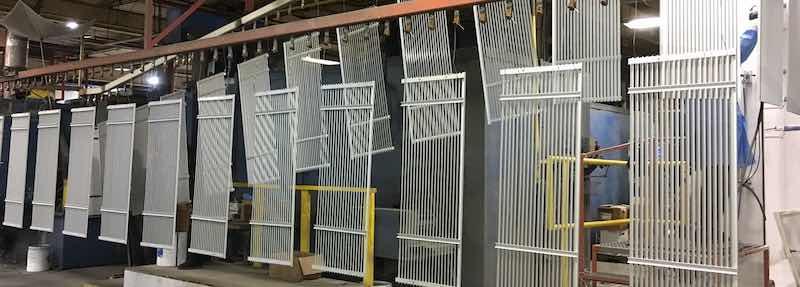 Troiano was recently honored by the FGIA for over 20 years of service, including many as a committee member of the FGIA Architectural Aluminum Handling, Cleaning, and Maintenance Task Group.
Troiano was recently honored by the FGIA for over 20 years of service, including many as a committee member of the FGIA Architectural Aluminum Handling, Cleaning, and Maintenance Task Group.
Updated Specifications on Cleaning Finished Aluminum
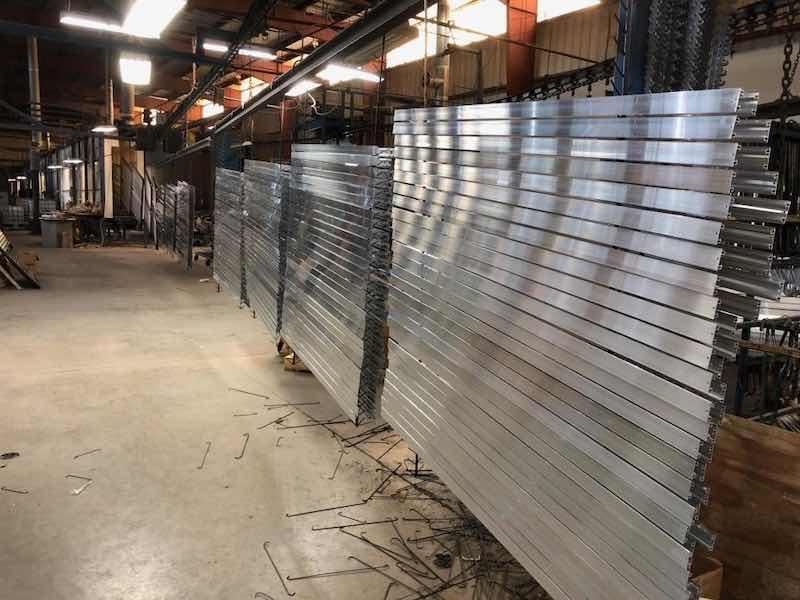 Recently, the FGIA released an updated specification outlining methods, equipment, and materials applicable for cleaning architecturally finished aluminum after construction and for subsequent periodic maintenance.
Recently, the FGIA released an updated specification outlining methods, equipment, and materials applicable for cleaning architecturally finished aluminum after construction and for subsequent periodic maintenance.
It was an important update from the FGIA Architectural Aluminum Handling, Cleaning, and Maintenance Task Group, of which Troiano is Vice Chairperson, because it specified how the material will be cared for after it is finished and installed.
This information is intended to guide architects, owners, building managers, contractors, and others in the building industry interested in the proper care and maintenance of finished architectural aluminum.
“This guideline will benefit all those involved in the entire process, from manufacturing and fabrication to installation and future project maintenance,” Troiano says. “It is the most current specification to help deal with the cleaning and maintenance guidelines to prevent damage to the finished aluminum surfaces.”
“All our employees are cross-trained to do everything we do in any department. If one department gets slow and doesn't have a workload, we transfer them to another. That's been a very versatile tool to have.”
However, the importance of Troiano’s industry work with FGIA is by no means overshadowed by the emergence of Trojan Powder Coating as one of the preeminent architectural finishers in North America.
3 Facilities, 2 States, and 200,000+ SQ FT of Space
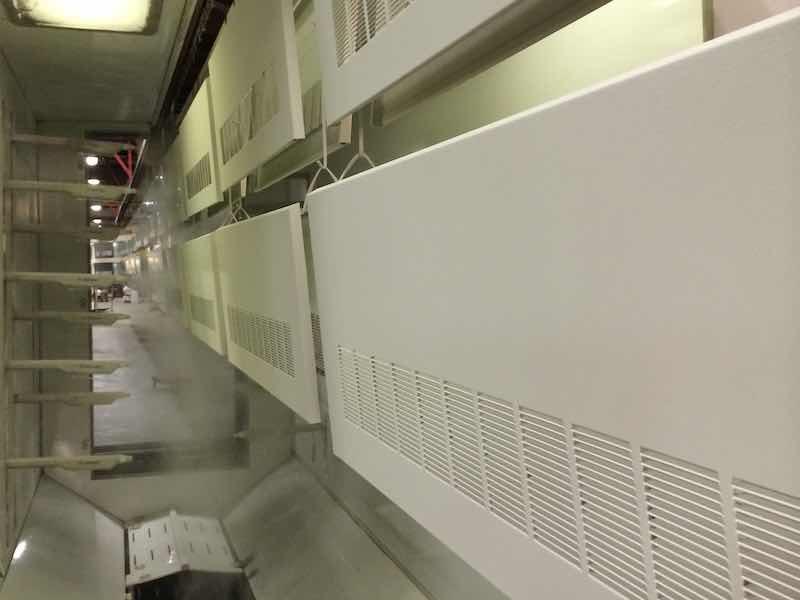 Their three facilities—one in New York and two in Florida—combine a wide range of coating services with innovative equipment, techniques, faux finishes, liquid kynar finishes, and lamination.
Their three facilities—one in New York and two in Florida—combine a wide range of coating services with innovative equipment, techniques, faux finishes, liquid kynar finishes, and lamination.
Their Long Island, New York, location is 78,000 sq. ft., the Sarasota, Florida facility is over 90,000 sq. ft., and the most recent location in Pompano Beach, Florida, is around 54,000 sq. ft. This makes Trojan Powder Coating one of the largest powder coating providers on the East Coast.
With about 75 employees in all three locations, Troiano has worked hard to maximize operational efficiencies and maximize the use of his people, equipment, and space.
“We were able to streamline and become more efficient,” he says. “All our employees are cross-trained to do everything we do in any department. If one department gets slow and doesn't have a workload, we transfer them to another. That's been a very versatile tool to have.”
But powder coating didn’t start to be Troiano’s bread and butter. His father established a furniture business in New York in 1959, selling aluminum furniture to the masses. When Troiano joined the family business, he was all-in on the furniture side until they began considering switching from liquid paint to powder coating in the late 1980s.
“They said, ‘We want you to open up a facility in Sarasota. And I said, ‘Why would I do that? I'm pretty well set in New York.’”
The furniture company eventually bought a larger facility in Bayshore in 1987 and began incorporating powder coat into its operations. But a few years later, when it saw competition from Asia bring patio furniture into the U.S., it switched entirely to its coating business.
“We switched gears from patio furniture and got into a lot of displays for Nintendo, Game Boy, Philip Morris, a lot of department stores and clothing racks,” Troiano says. “It was a very viable business, but years later, all that business went to China. So we had to reinvent ourselves once again.”
Getting Certified for Architectural Coatings
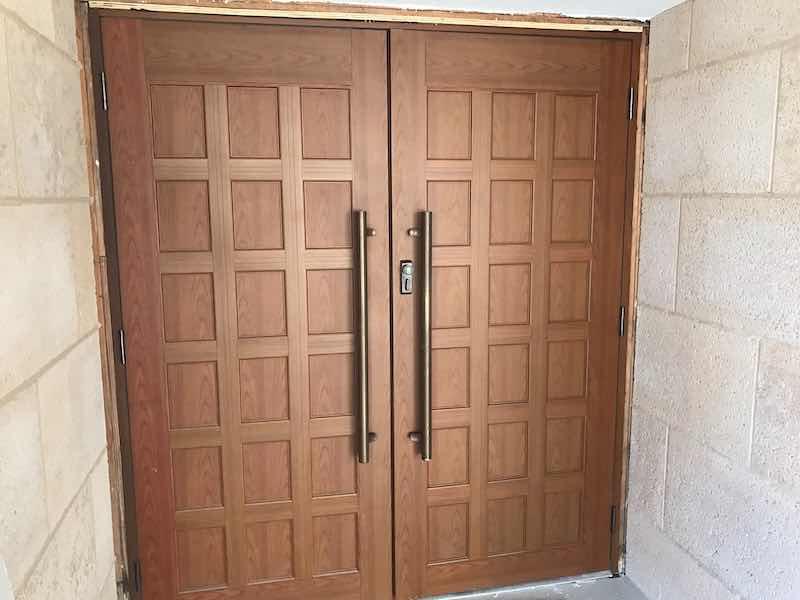 Troiano and Rein also decided to find another product line they could powder coat, and they used a sublimation process to finish parts.That is when Troiano and his Vice President, Keith Rein, relaunched Trojan Powder Coating in 1990 and began to get certified for architectural coatings through what was then AAMA. Troiano and Rein also decided to find another product line they could powder coat, and they used a sublimation process to finish parts.
Troiano and Rein also decided to find another product line they could powder coat, and they used a sublimation process to finish parts.That is when Troiano and his Vice President, Keith Rein, relaunched Trojan Powder Coating in 1990 and began to get certified for architectural coatings through what was then AAMA. Troiano and Rein also decided to find another product line they could powder coat, and they used a sublimation process to finish parts.
“I went to Italy, bought a machine, put it together, and we started doing sublimation with wood grain looks and granite marble,” Troiano says. “Unbeknownst to me, one of the largest hurricane window manufacturers in Florida had bought the first sublimation machine and had an exclusive for the hurricane window and door market.”
However, the manufacturer changed plans. Instead of putting in a large powder coating line, they put in a glass plant and decided to use one of the aluminum extruders to produce the coating material for the finish.
“It was very difficult to spray — and the extruders had a tough time doing that — so I got called in because I had the sublimation process pretty much under control,” Troiano says. “We did the base coat for PGT out of New York. It was trailer after trailer just on the base coat.”
After several years, trucking the parts became expensive for the manufacturer, and Troiano received a phone call to come to Florida and speak with them.
“They said, ‘We want you to open up a facility in Sarasota,’” he recalls. “And I said, ‘Why would I do that? I'm pretty well set in New York.’ They go, ‘No, it's the transportation cost, and we'll help you open up a facility in Florida.’”
Moving to Florida was a Life-Changing Moment
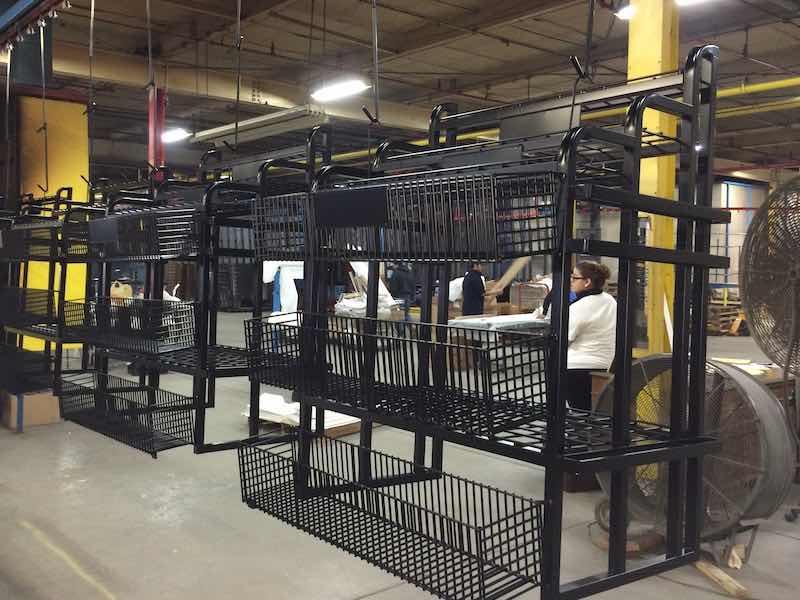 Troiano moved to Florida to set up the Sarasota facility while Rein managed the New York operations.
Troiano moved to Florida to set up the Sarasota facility while Rein managed the New York operations.
“I set up another whole powder coating line, and we had plenty of customers in Florida,” Troiano says. “It was a thriving business.”
While he was setting up the new powder coating line, Troiano received a phone call from one of his customers telling him there was a liquid paint line available in Pompano Beach. While Troiano admitted he was overwhelmed with setting up the Sarasota location and hiring staff, he agreed to drive over and take a look.
“That's probably my mistake because I looked at it, and we ended up leasing that building for five years with an existing paint line there,” he says. “After five years, I bought it.”
Pompano only uses liquid Kynar finishes, and Sarasota uses all the finishes, including powder coating, sublimation, lamination, and vinyl profile wrapping. The facility can powder coat large structures up to 50 feet long, 10 feet wide, and 10 feet tall.
“ I just went to find out what the AAMA specs were, and the next thing, I'm up to my elbows.”
“It was more economical to do it here in Florida since I had a bunch of customers in Florida I was dealing with already,” Troiano says. “The freight was becoming an issue, so it was logical to do this.”
Growing the Business Through Relationships with Manufacturers
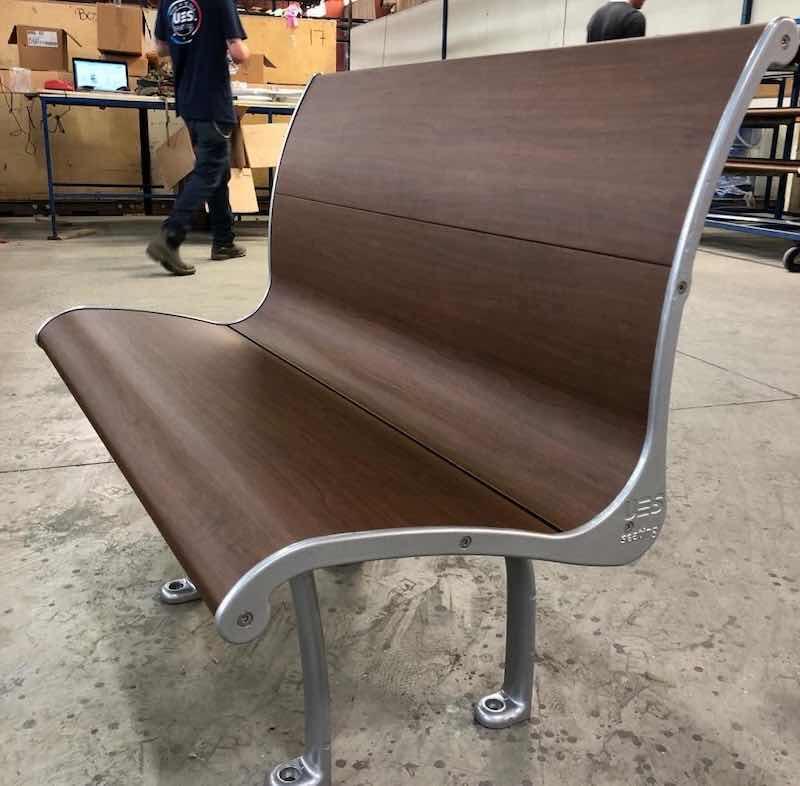 Not only has Troiano and Trojan Powder Coating been able to become more closely involved in FGIA activities, but Troiano says it has helped him grow the business by meeting some of the manufacturers involved in architectural coatings.
Not only has Troiano and Trojan Powder Coating been able to become more closely involved in FGIA activities, but Troiano says it has helped him grow the business by meeting some of the manufacturers involved in architectural coatings.
“You build up a friendship with all the members,” he says. “It's been like a lifelong membership or a friendship for 20 years. And that's another special thing that happens as you bond over these issues.”
But even with the friendships, Troiano says that Trojan Powder Coating has had to prove itself daily to its customers to keep its business. One bad day on the coating line could be catastrophic to the relationship.
“You have to prove to your customers — if you're lucky enough to get some business from them — that you can give them the product they demand,” he says. “Many of the window companies I work for come here and audit us inside and out. They want to know where your human resources manual is and how you track things. Is your data secure and not going to get hacked? On and on it goes, and a lot of time and effort goes into that.”
Troiano admits he has enjoyed every moment of the past 20 years with the FGIA, where he has been a voice of the finishing industry, sitting at the table alongside architects, extruders, builders, and engineers.
“We go to meetings three times a year, and when you're there, you're in meetings from seven o'clock in the morning until four or so,” he says. “And then you have a cocktail hour, an awards dinner and presentations, or we have a fun thing to do maybe like team golf or something. But then again, we work on these things all year long, and we have conference calls throughout the year, and in our conferences, we try to iron it out, get it voted on, and get these documents pushed through.”
Troiano says he never imagined his career—nor the growth of his business—would turn out this way when he started in a small Long Island shop more than 30 years ago.
“ I just went to find out what the AAMA specs were, and the next thing, I'm up to my elbows,” Troiano says.
Visit https://trojanpowder.com.




